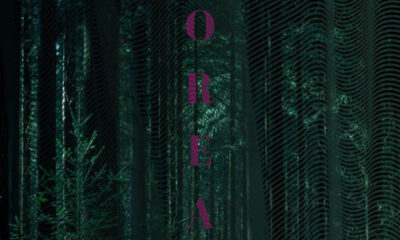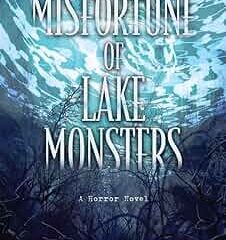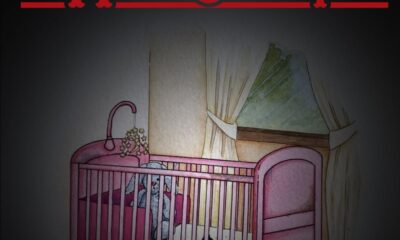
Monastery Series 9: a Book Review
We are nearly there, dear readers! This is our two-part finale of the mystery thriller series Monastery. While our group of makeshift detectives have gone through some serious challenges in the previous instalments, this one takes them to new heights. Yes, I didn‘t think that was possible either and yet here we are. But that’s enough of me talking, I’ll let the story speak for itself. Let’s dive back in!
Plot
We pick up right where we left off in the last part. David and Henry are on their way to confront Francis in order to get Rocky back. To no one’s surprise, Francis is not playing around this time. He is willing to kill David so he can get the key to his father’s money. As if that wasn’t bad enough, he’s also holding Nicole hostage.
Speaking of hostages, they’re not the only ones at peril. Rick, who is now a full-on Francis’s sidekick has Thomas and Alfie. It’s not a great way for our protagonists to start the grand finale, that’s for sure. We also have a secondary storyline of Nana Beth, who feels she has had enough of this world. Despite her granddaughters’ protests, she is resigned that her time has come.
Nana Beth’s character is an interesting tool to portray one’s outlook on death. The entire aspect of death is a huge theme of the story, considering Albert narrates it from beyond the grave. Nana Beth knows she has lived a fulfilling life with her soulmate and is meeting death on her terms and with grace. It also adds a bit of breathing room during all the chaos.
A lot of the story in this instalment takes place during the double hostage situation. This is not the first time we genuinely worry about the gang’s safety but the first time we’re facing the threat head-on. After all, this is the end, and anything could happen.
It doesn’t mean we don’t get some interesting character exploration. After all, it’s a question we’ve been asking – why do both Francis and Rick act the way that they do? I found that fascinating because the narrative makes it clear that their actions cannot be excused in any way. Despite that though, their dialogues explain how they justify their actions to themselves. It’s so unsettling to stare into the psyches of deeply messed-up people. We know family can be difficult, but Francis’s hatred is on a whole other level.
Fred continues to be the unexpected underdog as he shows up to save David and Nicole. He even ends up taking a bullet for his cousin. I do wonder if we will get some sort of a conclusion to the love triangle mess. I know, I know – it’s not a priority right now but colour me curious.
As for our head detective Thomas, he is not afraid to challenge Rick on his crap, even if that means he gets a head wound. But ultimately, that is not how they escape – Madam Witch happens to come to the rescue. Some could argue that apart from the Monastery werewolf (a completely normal thing within the universe), this has been the first proper face-to-face instance with a supernatural being. Let’s just say I would not want to be Rick right now.
Once Thomas rescues David from joining Fred in the Shot and Tortured Men Department, the group ensues on a car chase as Francis tries to finish the job. This sequence had me on my toes and I could not help but cheer when they managed to escape. The joy makes Martin’s kidnapping shortly after sting even harder. We know that Francis is not afraid to stoop lower if that’s even possible. I am genuinely scared of what is going to happen when the group faces him again. One can only hope that they’re all going to make it out okay.
We end the instalment with a bit of a bittersweet note as we witness Cassandra suffocating Nana Beth, with her permission of course, so that she could meet Pop Dennis in the afterlife. I found it to be a heartbreaking but beautiful moment and a fitting end to the episode.
Overall thoughts
A lot has already been said, but this part of Monastery was easily the most spine-tingling tense one yet. It kept me entertained in the best possible way and it made me realise just how much I care for each and every member of the gang. I can only hope that one day they can heal both their physical and emotional scars from this whole ordeal. Provided that they all make it, of course.
With the next instalment being the last one, I realised that we’re still nowhere near discovering what exactly happened to Albert. The story is now about so much more than that but considering how it was the catalyst event for everything, we have to find out the truth, right? Right? We will see…
 (5 / 5)
(5 / 5)
More thoughts from the author:
1. Something that happens a lot throughout the episode is David and Thomas trying to rationalise why Francis and Rick are acting the way they are, all while being held hostage. How do you find the balance in putting in that character development/revelation while still keeping the tension?
Simple – I work the tension into the development and revelations. Or, I use those developments and revelations to further escalate the tension. Francis revealing the motives behind his actions leads to David rebuffing his arguments, which leads to more and more back-and-forth and doesn’t stop till somebody gets shot in the gut. While Thomas realising the role Rick played in the death of a loved one leads to a heated confrontation, which nearly ends with a child getting their throat slashed. That’s the beauty of story serving story – everything comes together, and everyone goes apeshit.
2. Your take on death and the afterlife in this story is quite beautiful in a bittersweet way, as portrayed by Nana Beth. What inspired you to take this angle and does it ever get uncomfortable writing about death in general?
Never – it’s a most soothing experience. Truth is, I never met my grandfather – he died the year before I was born. So, to use the character of Albert to put a witty, spiritual, and bittersweet spin on my grandfather’s own tale, based on everything that’s been handed down to me through the years of what his life was like, is almost spiritual. I choose to believe some of Albert’s voice, humour and musings come directly from my grandfather. A few of the other characters who pass away in this book series are modelled after people who have sadly also passed in the real world, so I like to think I’m honouring their memory by addressing both their lives and potential afterlives – my way of ensuring they go on.
3. Lastly, this is the instalment where we see quite a display of supernatural when Madam Witch saves Thomas and Alfie from Rick. It’s kind of implied that she knew they needed help the whole time but was waiting for the right moment. Is it possible that she knows exactly how everything will play out and the second part of the finale will feature even more supernatural as the gang go to save Martin?
To the first part of that question – yes, it is heavily implied that Madam Witch knows everything, especially from the chessboard and pieces at her place. The last episode will feature a great deal of Madam Witch (from the very first scene in the teaser) and we will even scratch out an unanswered question that namechecks her…
As for the second part, while we will see more supernatural occurrences and the gang will rush to save Martin, the two will not intersect – the rescue party will be very grounded in reality. Well, as realistic as the folks in Monastery can get.
Amazon insert:
Book Reviews
A Stellar Debut Novel, We Used To Live Here
Imagine this. You’re home alone, waiting for your partner to return, when you hear a knock on your door. You answer it to see a family of five, bundled up against the cold. The father, a kindly older gentleman, explains that he used to live in this house as a boy. And he would love to show it to his family.
Do not let them in.
The story
Released in June 2024, We Used To Live Here is author Marcus Kliewer’s debut novel. It tells the story of Eve, who just purchased a beautiful house with her partner, Charlie. Their plan is to flip the house and sell it.
One night, while waiting for Charlie to come home, Eve is surprised by a knock at the door. It’s a man named Thomas Faust and his family.
Thomas explains that he grew up in the house and hasn’t been in the area in years. Would Eve let them in so that he can show the home to his children?
Against her better judgment, Eve lets them in. She regrets this almost at once when Thomas’s daughter vanishes somewhere into the house.
What worked
I always appreciate a book that allows you to play along with the mystery. And this book does that better than just about any other I’ve seen.
Pay close attention to the chapters, to the words that aren’t there. To everything about this novel.
This is mostly down to Kliewer. This is ultimately his work of art. But the production value is also fantastic. I don’t want to ruin the multiple mysteries, so I’ll just say this. There are clues in this book that require some specific artistic choices in the page layouts in this book. And I loved that.
If you’d like to experience another horror book review, check out this one.
We Used To Live Here is also the kind of story that makes you question everything right along with the main character, Eve. Eve is a great main character. But she might be an unreliable narrator. She might be experiencing every single horror described, exactly as it’s described. Or, she might be having a psychotic breakdown. Through most of the book, we can’t be sure. And that is so much fun.
Finally, the weather plays a large part in this story. There are several stories in which the weather or the land itself could be considered a character. Even an antagonist. This is certainly one. The winter storm is the thing that traps the family in the house with Eve. It also makes escaping the home difficult. Reading this book during the winter was especially impactful. Most of us know what it feels like to be shut in by a storm. I’ve personally lived through some of those storms that are just referred to by their year, as though they were impactful enough to claim the whole 365 days for themself. And that was with people I liked. Imagine what it would feel like with strangers. It’s a staggering thought and one that we explore in depth in this book.
In the end, We Used To Live Here is a fantastic book. It’s the sort of story that sneaks into your brain and puts down roots. And if this is just the first book we’re getting from Kliewer, I can’t wait to see what else he comes up with.
 (5 / 5)
(5 / 5)
Book Reviews
Exploring real terror with The House of My Mother
As a disclaimer, this is a review of The House of My Mother from a critical perspective. I will not be discussing my opinions of the legal case against Ruby Franke and Jody Hildebrandt. I will be discussing the merits of the book as a work of true crime alone.
In 2015, Ruby Franke started a YouTube channel called 8 Passengers. In August of 2023, Franke and her business associate Jodi Hildebrandt were arrested for, and later plead guilty to, charges of aggravated child abuse. And in January of this year, Shari Franke told her story in The House of My Mother.
The story
The House of My Mother is the true story of Shari Franke, the oldest child of one of the most famous family vlogger families.
As a child, Shari came to the conclusion that her mother didn’t like her. Soon, she began to fear her mother’s anger.
Things got significantly worse when Ruby started their family vlog. All of the families most intimate moments were splashed across the internet for anyone to watch. This became a living nightmare for Shari.
Of course, that was only the start of the family nightmare. Because Ruby was about to meet someone who would reinforce all of the darkest parts of herself.
Eventually Shari manages to escape her home. But her younger siblings were still in her mother’s clutches. She had to save them, and her father, from the monster her mother had become.
What worked
Through the book, Shari only ever mentions the name of one of her siblings, Chad. This is because Chad is the only of her siblings that is an adult at the time of the publication.
There are children involved in this story. Children who’s lives and privacy have already been damaged. Shari didn’t want to do that to them again, and neither do I.
It probably won’t surprise you that this book is full of upsetting details. But not in the way you might imagine.
Nowhere in this book will you find gory details about the abuse the Franke kids suffered. And I consider that a good thing. Those sort of details are all fun and games when we’re talking fiction. When it’s real kids who are really living with the damage, it’s not a good time.
What you’ll find instead is a slew of more emotionally devastating moments. One that stuck with me is when Ruby’s mother gives her a pair of silk pajamas as a gift after Ruby gave birth to one of her babies. Shari asks Ruby if she’d bring her silk pajamas when she had a baby. Ruby responds that yes, when Shari becomes a mother they can be friends.
What a lovely way to make a little girl feel like she’s not worth anything unless she reproduces. And, if she does decide to have children, who is going to bring her silk pajamas?
In the end, this isn’t a story about ghosts or demons. It’s not about a serial killer waiting on a playground or in the attic of an unsuspecting family. Instead, this is a story about things that really keep us up at night. It’s the story of a woman so obsessed with perfection that she drove away her eldest daughter. The story of a young woman who’s forced to watch from afar as her beloved brothers and sisters are terrorized and abandoned. These are the sorts of things that really keep us up at night. These are the real nightmares.
More than that, though, The House of My Mother is a story of survival. It’s about a family that was ripped apart and somehow managed to stitch itself back together again. It’s about a brave young woman who managed to keep herself safe and sane in the face of a nightmare. If you haven’t read it yet, I can’t recommend it enough.
For more like this, check out my review of Shiny Happy People.
 (5 / 5)
(5 / 5)
Book Reviews
Book Review of Boreal: an Anthology of Taiga Horror

Boreal: an Anthology of Taiga Horror is a collection of twenty-two haunting tales that dwell in the deepest darkest woods and frozen wastelands, edited by Katherine Silva and including Haunted MTL’s very own Daphne Fauber. Each story has even been gifted with its very own poster, hinting at the horrors to be found within it, bestowing a beautiful visual collection as well.
The tales are varied and touch upon the environment in new and different ways, each hearkening to a sort of epiphany or raised awareness. These stories exude both dread and wonder at the smallness of our human existence in contrast to the sacred world we have isolated from, sheltering ourselves in our comfortable houses with centralized heat and everything we could possibly need or want at the ready. The taiga becomes a sanctuary outside of our own dulled awarenesses. It is a holy place imbued with powers beyond mortal human reach, a wilderness that threatens to swallow us – both whole and bit by bit, simultaneously.
The protagonists enter into this realm through ritual, superstition, longing, stubbornness, and their own hubris – yearning to survive its dangers, and to make their own marks upon it. The starkness of their surroundings harbors delicate moments that would be all too easily missed if not deliberately sought or pointed out. The softness of fur, the dappled sunlight shining through trees, the hazy clouds of breath forming in crisp air, the brittleness of bleached bone… those quiet experiences that beg to be forgotten, to lay safely sleeping just below the frozen surface, awaiting spring.
There are those who followed in the footsteps of their predecessors, seeking to escape the constraints of their parent’s and elders’ indoctrination, traditions, madness, and abuse, yearning to find their own way despite also being inextricably bound to their own pasts. There are those who just wanted to go for a walk in the woods, and remained forever changed by what they experienced. There are those who wished to impose their will upon the wilderness, their order falling to disarray, unable to make lasting impact. There are those who sought to leave behind the world of mankind, looking for oneness in the natural order of things through isolation, leaving a bit of themselves behind after being consumed by the terrors they encountered. There are those who truly found communion with the woods, became one with its wildness, and invited its spirit into their hearts to find peace, even at cost of their own lives. And then, there are the spirits themselves…
 (3 / 5)
(3 / 5)
All in all, I give Boreal: an Anthology of Taiga Horror 3.0 Cthulhus. I love existential angst so I found it to be an enjoyable read, and I appreciated the myriad manners in which the biome was explored. But there were points in which I found myself struggling to follow along, as if the words were swept up into their own wilds in ways that alienated myself as reader, as if my mere voyeurism into this otherworldly place was not enough to comprehend the subtle deviations in storytelling mannerisms fully. I suppose in some sense this seems appropriate, but at the same time, it left me feeling a bit unfulfilled, as if I had missed a spiritual connection that should have resonated more deeply.













